So you're thinking of writing your language in the Latin alphabet? That's a safe choice - after all, more than half of the world uses it, so it must work.
Well, it has a few problems you should know about in advance. The main one is that it doesn't have enough letters! The classical 20-letter alphabet used to write Latin added three more letters (K Y Z) to write Greek words, and English added another three (J V W), but those 26 letters - the ISO Basic Latin Alphabet found on every computer - still aren't enough!
Another huge problem is that the same letters don't stand for the same sound in different languages, or even in the same language. For example, the Js in English John, French Jean, German Johann and Spanish Juan all sound different, and our sh sound might be written ch sch sci s sz ś š x kj or even ti (as in words like nation).
Finally, each letter has several different forms: uppercase, lowercase, italic, cursive or just plain variants. There's no apparent benefit to this variety, just more rules you have to learn to know when to capitalize letters.
But you're still convinced that the Latin alphabet is going to solve all your problems, right? So here's a brief introduction.
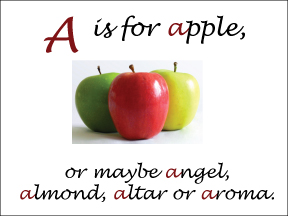
The letter
Aaɑ usually stands for the sound you make with your mouth wide open, as in
father, /a/ in IPA. But sometimes it stands for the /æ/ sound made with your lips as spread as possible, as in
fantasy. It also stands for the /ɔ/ sound of
fall, the /e/ sound of
famous, and often for the /ə/ sound made with your mouth relaxed, as in
familiar. Sometimes, it's marked with an accent or two:
ȧ ä à ȁ á ā ã â ǎ ȃ ă å ą, or it might be followed by another vowel or semivowel to represent a diphthong or just another vowel sound:
aa ae ai ao au ar aw ay. Apparent!
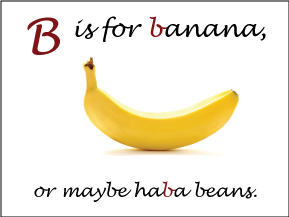
The letter
Bb usually stands for the voiced /b/ sound you make by trapping a little bit of air behind your closed lips for a moment, as in
babe. But in many languages, it's sometimes pronounced like a
p, as in German
Kalb, Catalan
corb or Chinese
Beijing. In Spanish, between vowels, it's a
v with both lips, IPA /β/. Obvious!
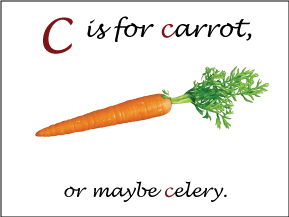
The letter
Cc has many sounds. "Hard"
c sounds like a
k (and is sometimes written
ck), while "soft"
c sounds like an
s. In Spanish,
c stands for a
th sound. In Slavic languages, Chinese and German,
c stands for a
ts sound. In Italian, Romanian and Malay,
c stands for a
tsh sound. In Turkish and Azeri,
c stands for a
dj sound. And it originally stood for the
g sound, as in
gamma. Sometimes, it's marked with an accent -
ç ć ĉ ċ č among others - or combined with
h,
z or
s to spell the sounds of
church ache charade or
loch. Clear!

The letter
Dd usually stands for the voiced /d/ sound you make by trapping the airflow behind your teeth for a moment, as in
dude. But in Chinese, it stands for /t/, in Vietnamese, it stands for /z/, and in Fijian it stands for /nd/. In Spanish, between vowels, it's a
th, IPA /ð/. Evident!
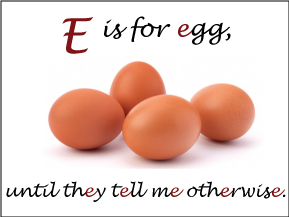
The letter
Eeε can stand for IPA /ɛ/ as in
then, /e/ as in
they, /i/ as in
thee, /ə/ as in
the or even /ø/ in French. It's often accented:
ė ë è é ē ẽ ê ę ȅ ě ȇ or combined with other letters, like
æ or
œ. Or it might be followed by another vowel or semivowel to represent a diphthong or just another vowel sound:
ea ee ei eo eu er ew ey. Easy!
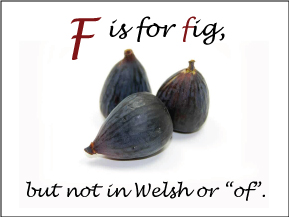
The letter
Ffƒ almost always stands for /f/, so it's funny that it started out representing /w/! It's also funny that the
f sound is spelled so many other ways - why?
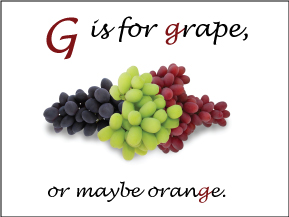
The letter
Ggɡ can be hard /g/ as in
get or soft /ʤ/ as in
gel or even softer /ʒ/ as in
genre. In Flemish, it's /ɣ/ as in
Gent, and in Spanish it's /x/ as in
Gijón. With
h, it can be /g/ as in
ghost, /f/ as in
laugh or silent as in
neighbor. With
n it's /n/ as in
sign, /ŋ/ as in
sing, /ŋg/ as in
finger, /ɲ/ as in
lasagna or silent as in
gnome. Gee!

The letter
Hh has four common sounds: either /h/ like in English
hazard, /ɦ/ like in Czech
hazard, /x/ like in Polish
hazard, or silent like in French
hasard. But it's also used a lot as the second letter of a digraph, as in
bh ch dh gh kh ph rh sh th wh zh, where it indicates either aspiration as in
Gandhi, affrication as in
chip or palatalization as in
ship. Holy cow!

The letter
Ii has many identities: as /ɪ/ in
chit, /i/ in
chic, /aɪ/ in
child, /ɨ/ in
merit or silent as in
fruit. In German,
ei spells /aɪ/ and
ie spells /i/, just the opposite of English. In Catalan,
ix spells /ʃ/ and
ig spells /ʤ/ or /ʒ/. In Chinese,
i spells three different sounds: /i/ /ʐ/ /ɻ/. It can carry lots of accents:
í ì î ï ĩ ī ĭ į ı ǐ ȉ ȋ. Ay yay yay!

The letter
Jj spells a different sound in almost every language, including /j/ /x/ /ʒ/ /ʤ/ /ʨ/ /ɟ/ and /ʐ/. The original sound was the same as
i when used as a consonant, like English
y - that's why it's an
i with a tail. So don't pronounce
Julius Jesus Judas Joseph Jonah Jeremy Joel Jacob or
Jared with a /dj/ sound!

The letter
Kk is one of the simple ones: it almost always spells /k/. So if we have a letter that unambiguously spells /k/, why do we spell /k/ so many other ways, as in
card,
chord,
plaque or
pack? Krazy!

The letter
Ll always spells a type of
L. Usually, it's the common /l/, but after a vowel in English, it spells a "dark" /ɫ/ as in
all or
bottle. In other languages, a palatal lateral /ʎ/ is spelled
ll,
gl,
lh or
ļ, and the voiceless lateral in Welsh is also spelled
ll. Logical!

The letter
Mm always spells /m/. In words like
rhythm,
chasm or
prism there's actually an unwritten vowel in front of the
m; the final syllable is pronounced just like in
system, bottom or
album. Magical!
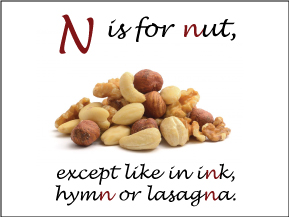
The letter
Nn usually spells /n/, but it isn't quite as predictable as its sister
m, because of all the other sounds we borrow the
n to spell. In English, that includes /ŋ/, which is usually spelled
ng but is spelled just
n in
finger and
thinker and
nc in Catalan. The sound /ɲ/ is spelled
gn as in
lasagna, French and Italian, but spelled
nh in Portuguese,
ny in Catalan,
nj in Dutch and Croatian and
ñ in Spanish. A final
n in Japanese spells /ɴ/, and
n after a vowel in French spells a nasal vowel. And in English words like
autumn, solemn or
damn, it's silent. No problem!

The letter
Oo is omnipotent. It can spell /ɔ/ as in
off, /ɑ/ as in
on, /wə/ as in
one, /ʊ/ as in
good, /oʊ/ as in
old, /ə/ as in
of, /o/ as in
so, /u/ as in
to, /ɔɪ/ as in
toy, /aʊ/ as in
out, or even /ɚ/ as in
author. As
œ,
ö, or
ø, it spells /ø/. It's got accents galore:
ó ò ô ö õ ō ŏ ő ơ ǒ ȍ ȏ. Outstanding!

The letter
Pp almost always stands for /p/, although sometimes the /p/ is aspirated. The combination
ph stands for /f/, or more correctly for /φ/, with lower lip instead of teeth. But
p is often silent, as in
pneumonia,
psychology,
pterodactyl,
psalm and a few odd words like
corps coup receipt. Piece of cake!
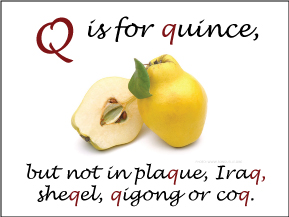
The letter
Qq is almost always followed by
u to spell the sound /kw/, but in French, Catalan, Spanish and Portuguese,
qu is pronounced /k/. In Arabic and many other languages,
q represents a uvular /q/, in Chinese it represents a palatal /tɕʰ/ sound, and in Maltese it represents a glottal stop. In general, because it's so rare and useless,
q has been repurposed for many sounds. Quaint!
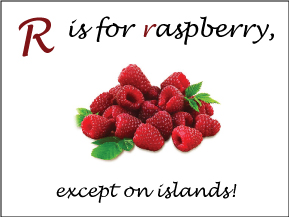
The letter
Rr always spells an "r" sound, but there are many different ones. It could spell a trill /r/ as in Italian, a tap /ɾ/ as in Russian, a semivowel /ɹ/ as in Mainland English, a guttural /ʁ/ as in French, a fricative as in Chinese /ʐ/, and several more, often more than one in a single language. And in Commonwealth English dialects, it lengthens the vowel, but it's silent. Remarkable!
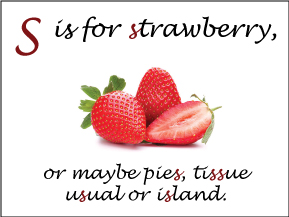
The letter
Ss spells a number of sounds, from /s/ as in
sister to /z/ as in
cousin to /ʃ/ as in
sure to /ʒ/ as in
pleasure. In many languages, these sounds are distinguished using accents like
ś š or combinations like
sc sch sg sh sj skj ss sy sz or the ligature
ß. And in words like
aisle, it's silent. Simple!

The letter
Tt usually spells the sound /t/, sometimes aspirated. But it's /ʃ/ in
nation, /tʃ/ in
nature, /θ/ in
nothing and /ð/ in
bathing. And it's silent in words like
often listen castle. Transparent!
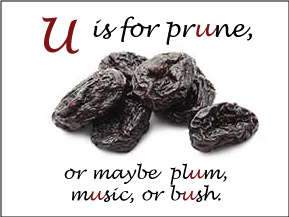
The letter
Uu has many sounds, ranging from /ə/ in
puppy to /ʊ/ in
put to /u/ in
plume to /ju/ in
pupil. In French, it spells /y/ as in
tu. And in many languages, it's also used as a semivowel /w/. Undemanding!
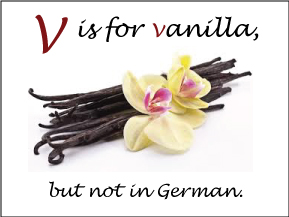
The letter
Vv usually spells /v/, but it sometimes spells /f/, as in
have when it means obligation, but not possession. But
f also sometimes spells /v/, as in
of or
roofs. In German,
v spells /f/, and in Spanish, it spells /b/ when initial, and bilabial /β/ otherwise. And informally in Chinese, it represents the vowel
ü. Very clear!
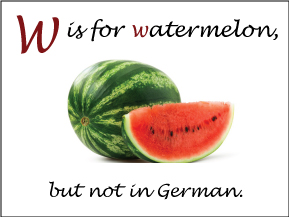
The letter
Wwω usually spells /w/, but in German, Dutch and Polish it spells /v/ or /ʋ/, and in Welsh it spells the vowel /u/! Weird!
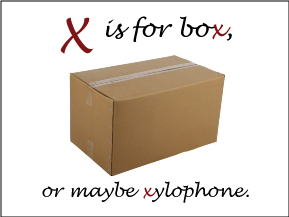
The letter
Xx represents three different sounds in English, but in different contexts, so there's no ambiguity. It represents /z/ initially, /gz/ before a stressed vowel, and /ks/ after a vowel. Another common pronunciation - for example, in Chinese and all over Iberia - is /ʃ/(sh). And in some other languages, it spells /x/(kh), as it does in Greek, Cyrillic and IPA. Sexy!
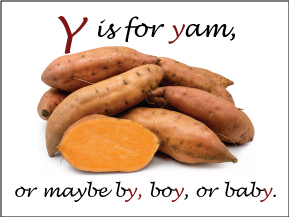
The letter
Yy usually represents a vowel: either short /ɪ/, long /iː/ or the /ai/ diphthong. But it also spells a semivowel /j/ both before and after another vowel. In Norwegian and Danish, it spells /y/(ue), and in Polish, it spells /ɨ/. Yikes!
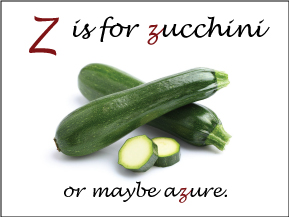
The letter
ZƵzƶʒ usually spells /z/ as in
froze, but it also spells /ʒ/ as in
seizure - both are much more commonly spelled with
s, as in
chose and
measure. Americans spell
realize with
z, while Brits spell it
realise. In German and Chinese,
z stands for /ts/, and in Castilian Spanish it stands for /θ/(th). It's the least used consonant in English, and the
most used consonant in Polish, where it occurs in
ź ż ƶ cz dz rz sz dź dż dƶ. Zany!
 Welcome to the Latin Alphabet!
Welcome to the Latin Alphabet!

























